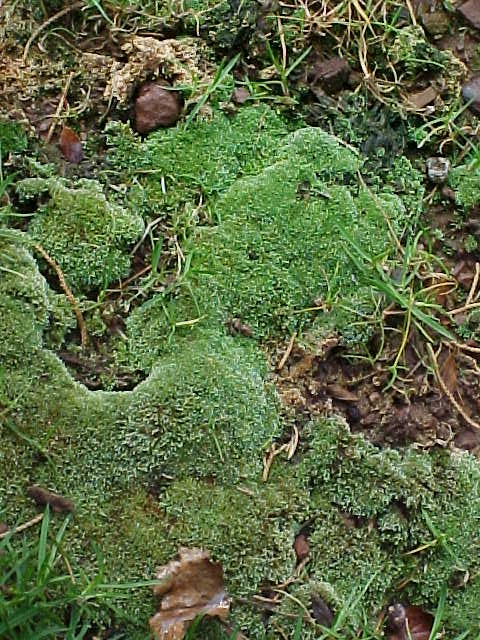Why Does My Lawn Have Moss?

Moss is a plant that generates a lot of questions from our customers. Most customers want to know why they have it and how they can get rid of it! This blog will discuss what moss is, why moss grows, and how you can help remediate the problem.
What is moss?
Moss is a non-flowering plant that grows low to the surface of the ground. Something unique about moss is that it does not have a root structure like grass and other common broadleaf weeds. It is also important to understand that moss does not kill grass, instead it fills in open spaces where grass varieties are not successfully growing.
Why is moss on your property?
Moss is on your property due to a combination of environmental factors, but the one we hear about most often is related to pH. While it is true that moss prefers acidic soil, it is not true that simply adding lime will get rid of it! You can have perfect pH levels, but if other environmental factors are present, moss can still grow.
If you have moss and want to know if your soil is acidic, the best plan is to test the pH and add lime only if necessary. A pH in the range of 6.3-6.5 is ideal for most cool season grasses in our area. In summary, having moss in your lawn doesn’t automatically mean your pH is too low and you need to lime, that could be a factor, but you need to test the soil’s pH to be certain.
Another environmental factor that helps moss thrive is shade. I don’t mean to imply that moss can not grow in areas of full sun, it can; however, it is the shade that gives the moss an opportunity to grow. What do I mean by this? Well, have you noticed that grass usually does not survive in areas of heavy shade? When grass cannot get enough sunlight, it dies and thins out. This is a perfect opportunity for something else, like moss, to move in and grow in the open and thin areas.
Further, soil moisture plays a roll in where moss is present on your property. If you think about where moss is on your property, you can probably find it in areas like the crack between two paver stones in your walkway or sidewalk. These areas trap moisture and can remain wet for a long period of time. This can be true in parts of your lawn as well. Not only does moss do well in wet areas, but the trapped moisture is not a favorable environment for grass. Over time areas with excess soil moisture will cause grass to thin and die off, creating a space for moss to grow.
Soil compaction also plays a role in where moss is present on your property. In our service area, soil is largely clay based. Clay based soil easily becomes compacted by foot traffic, mowers, pets, etc. Unfortunately, when soil is compacted, oxygen and water are unable to work their way through the soil and water often sits on top of the surface. In addition, grass roots have a difficult time growing in heavily compacted soil which will compromise the long-term health of the grass plant.
By now you should be seeing a common theme amongst the environmental factors. Environmental factors that negatively impact your turf, such as acidic soil, compaction, heavy shade, and excess moisture, are the same factors that moss prefers to grow in. Now these environmental factors certainly didn’t appear overnight; so, what can be done to help remediate the moss problem?
Getting rid of Moss
First, if you want to reduce the moss on your property, change the environment. For example, you may have a row of trees that have matured and created a large area of shade in your lawn. We recommend annually pruning or thinning the trees so more sunlight can reach the plants below.
Core aeration is a key component to help reduce soil compaction. This mechanical process removes plugs in the soil three to four inches deep. This creates space in the soil for grass roots to grow and allows oxygen and water into those spaces. Core aeration may need to be completed annually to remediate heavily compacted areas. For more information about core aeration, check out our blog.
- What the lawn looks like after core aeration.
Additionally, we recommend watering less in shaded areas of your lawn. If moss is a present issue, let the soil dry out in between watering to make sure the soil is not overly wet for long periods of time.
If you are interested in remediating moss quickly, you can physically remove it with a rake. There are also products you can purchase to kill moss. You can find them at most of the big home improvement stores in the garden section. Using these types of products will be effective in killing moss that is present; however, without changing the environmental factors the moss will return! It is also important to understand that crabgrass control and other broadleaf weeds will not have any impact on moss.
Conclusion
The only long term way to remediate moss in your lawn is to change the environment. Making those areas more hospitable to grass would help establish turf in the areas instead of moss. If you have further questions about moss, please contact our office or request a free estimate.






